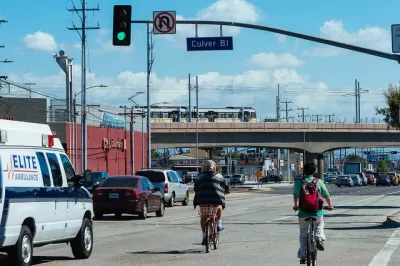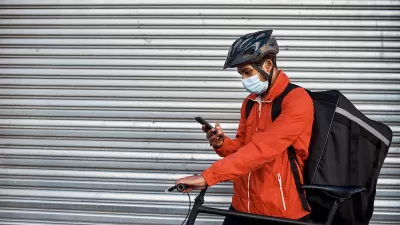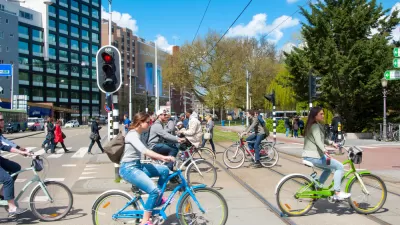One of the key assumptions of a new partnership between the planning and public health professions is that transit encourages more active mobility than possible with a car-centric lifestyle. But new research casts doubt on those assumptions.

"New findings by the University of Southern California and UC Irvine published in Transportation Research should give 'walkability' proselytizers some pause," according to an article by Laura Bliss. "This is one of the most comprehensive studies to date examining how access to light rail influences physical activity, and it found that having rapid transit nearby can boost steps for some—but can decrease them for others."
The study focused on physical activity by 200 participants living near Phase I of the new Expo Line in Los Angeles, which opened in 2012. According to Bliss, researchers found that although transit use increased after the new line opened, "there didn’t seem to be a significant jump in how physically active they were." When controlling for how physically active the subjects were to begin with, "individuals who were already pretty active turned out to be somewhat negatively affected by light rail access."
Bliss provides additional details on the finding of the study, and also noted how the experimental approach of this study differs from the cross-sectional approach of many previous studies that "found strong correlations between physical activity and transit use."
FULL STORY: When Light Rail Opens, Do People Really Get More Exercise?

Alabama: Trump Terminates Settlements for Black Communities Harmed By Raw Sewage
Trump deemed the landmark civil rights agreement “illegal DEI and environmental justice policy.”

Study: Maui’s Plan to Convert Vacation Rentals to Long-Term Housing Could Cause Nearly $1 Billion Economic Loss
The plan would reduce visitor accommodation by 25% resulting in 1,900 jobs lost.

Why Should We Subsidize Public Transportation?
Many public transit agencies face financial stress due to rising costs, declining fare revenue, and declining subsidies. Transit advocates must provide a strong business case for increasing public transit funding.

Wind Energy on the Rise Despite Federal Policy Reversal
The Trump administration is revoking federal support for renewable energy, but demand for new projects continues unabated.

Passengers Flock to Caltrain After Electrification
The new electric trains are running faster and more reliably, leading to strong ridership growth on the Bay Area rail system.

Texas Churches Rally Behind ‘Yes in God’s Back Yard’ Legislation
Religious leaders want the state to reduce zoning regulations to streamline leasing church-owned land to housing developers.
Urban Design for Planners 1: Software Tools
This six-course series explores essential urban design concepts using open source software and equips planners with the tools they need to participate fully in the urban design process.
Planning for Universal Design
Learn the tools for implementing Universal Design in planning regulations.
Caltrans
Smith Gee Studio
Institute for Housing and Urban Development Studies (IHS)
City of Grandview
Harvard GSD Executive Education
Toledo-Lucas County Plan Commissions
Salt Lake City
NYU Wagner Graduate School of Public Service





























